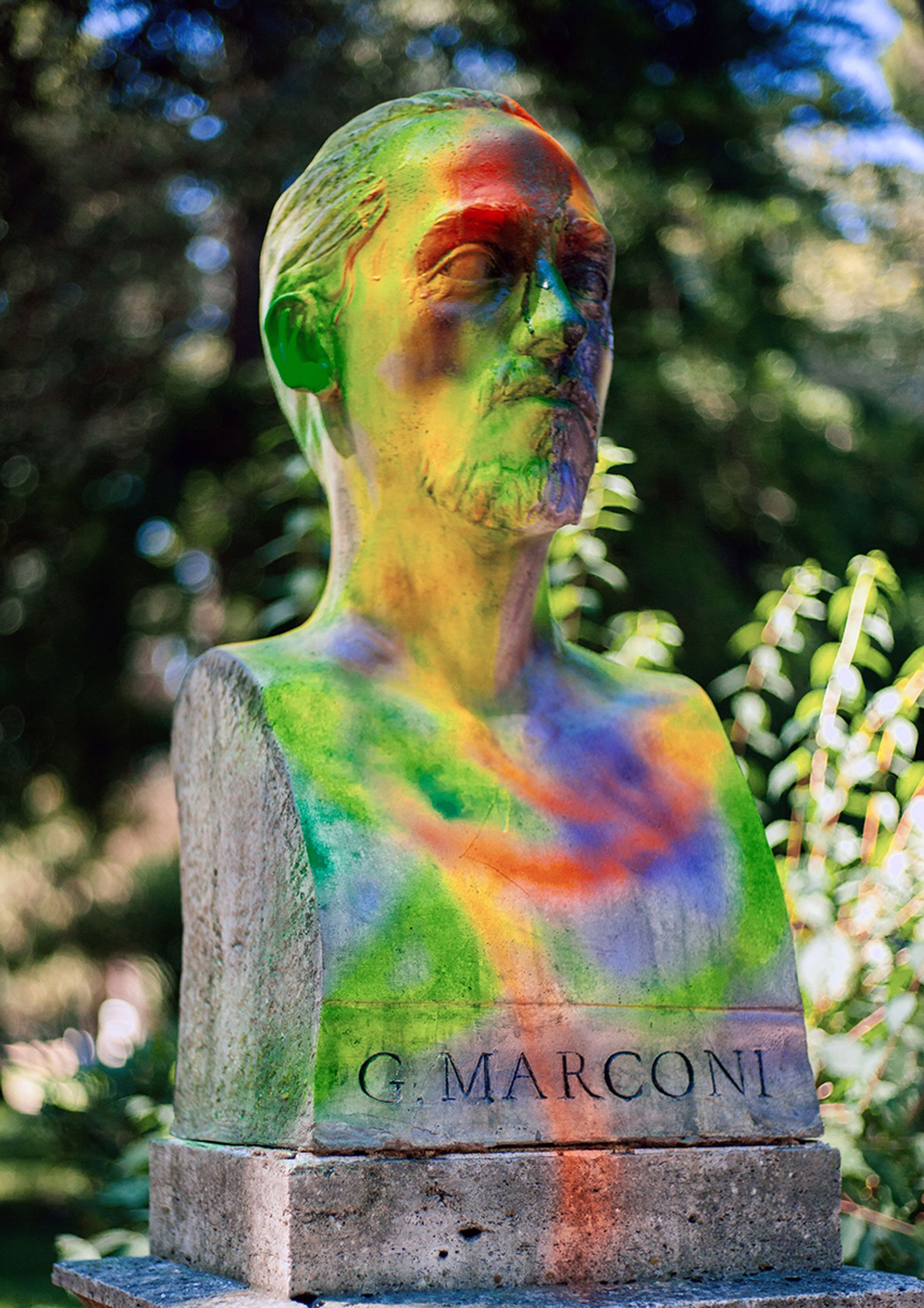When a statue of the the fascist inventor Guglielmo Marconi in a Roman park was defaced, it seemed like the latest in a string of protests by left-wing activists.
A group named “Creare è distruggere” posted a video of the statue being spray painted on Facebook on 12 September and questioned in a further post: “Is it possible to tolerate the veneration of people who turned fascism into a mentality?”.
A fiery exchange on social media ensued, while the newspaper Il Giornale dubbed the incident an act of “anti-fascist revenge”. Fabio Valletta, a Carabinieri commander in Rome, announced that the force was investigating the case, Rai News reported at the time.

© Photo: Alexander Mitchell
Five weeks later, however, a conceptual artist revealed it had all been an elaborate hoax. In an interview published in the newspaper Corriere della Sera on 17 October, Karlo Mangiafesta explained he had planted the statue in the park himself. Moreover, he had modelled the bust on his—rather than Marconi’s—face.
The audacious stunt has placed Mangiafesta on Italy's underground art map. Some commentators have portrayed the project as a reflection on the manipulation of truth in the era of fake news, while others have described the artist as an Italian Banksy (a description Mangiafesta rejects). In an interview with The Art Newspaper, Mangiafesta describes the stunt as a "coup de théâtre".
Numerous statues in Italy have been defaced in recent months, including a bust of the self-described colonialist Indro Montanelli in a Milanese park in June of last year. Mangiafesta positioned his statue of Marconi—who served Mussolini as President of the Royal Academy of Italy—in the Villa Borghese park, located on the Pincian Hill that is famed for its 228 busts.
A Wikipedia page entitled "Busti del Pincio” (Busts of the Pincian Hill) was updated after the stunt. The page indicated that the hill contains 229 busts and featured a photo of the vandalised Marconi statue (now removed).
"That the Wikipedia page was updated is emblematic of how we create ‘truths’ today," says Gianmichele Laino, the director of the digital media publication Giornalettismo, which recently ran an interview with Mangiafesta. “Wikipedia is an open collaboration source. If enough people believe something, it is taken to be correct.”
Renato Franco, the Corriere della Sera journalist who uncovered the hoax, knew Mangiafesta before the incident, and wrote the story after the artist tipped him off. The way the media faithfully reported the act of vandalism before digging deeper shows how superficial much reporting is, Franco says. “We produce, and consume, the news so quickly that we no longer go into depth.”
Mangiafesta's biographical details can be hard to pin down. The artist, who is commonly described as from Rome, tells The Art Newspaper he is 17, while an article published in La Stampa in October 2020 cites his age as 24. "I'm guessing he's in his early 20s," Laino says.
Unlike many anonymous artists, however, Mangiafesta’s trademark symbol is his face. His Instagram page is filled with images of his goateed visage pasted onto other people's bodies—including glamour models, Greta Thurnburg and Leonardo’s Salvator Mundi. One 2020 project involved him posting mock missing posters bearing his headshot around Rome. Asked whether he works with collaborators, Mangiafesta says: “A good show cannot be produced by one man alone”.
While dismissing the Banksy analogy as “shallow”, Mangiafesta expresses admiration for Jens Haaning, the Danish artist whose latest conceptual work involved running off with a museum loan of 538,000 Danish kroner (around $85,000). The work of Luther Blissett, which gained prominence in the 1990s for elaborate media pranks mocking mainstream views, was “extremely well-executed'', he says.
According to Marco Deseriis, a former member of the Rome branch of Luther Blissett, and an assistant professor at Pisa’s Scuola Normale Superiore, “the various levels of falsification [involved in the Marconi stunt] are interesting”. But the academic questions the project’s inherent value. "We already know that we live in an age of fake news,” Deseriis says. “What is Mangiafesta telling us that we don’t already know?”


